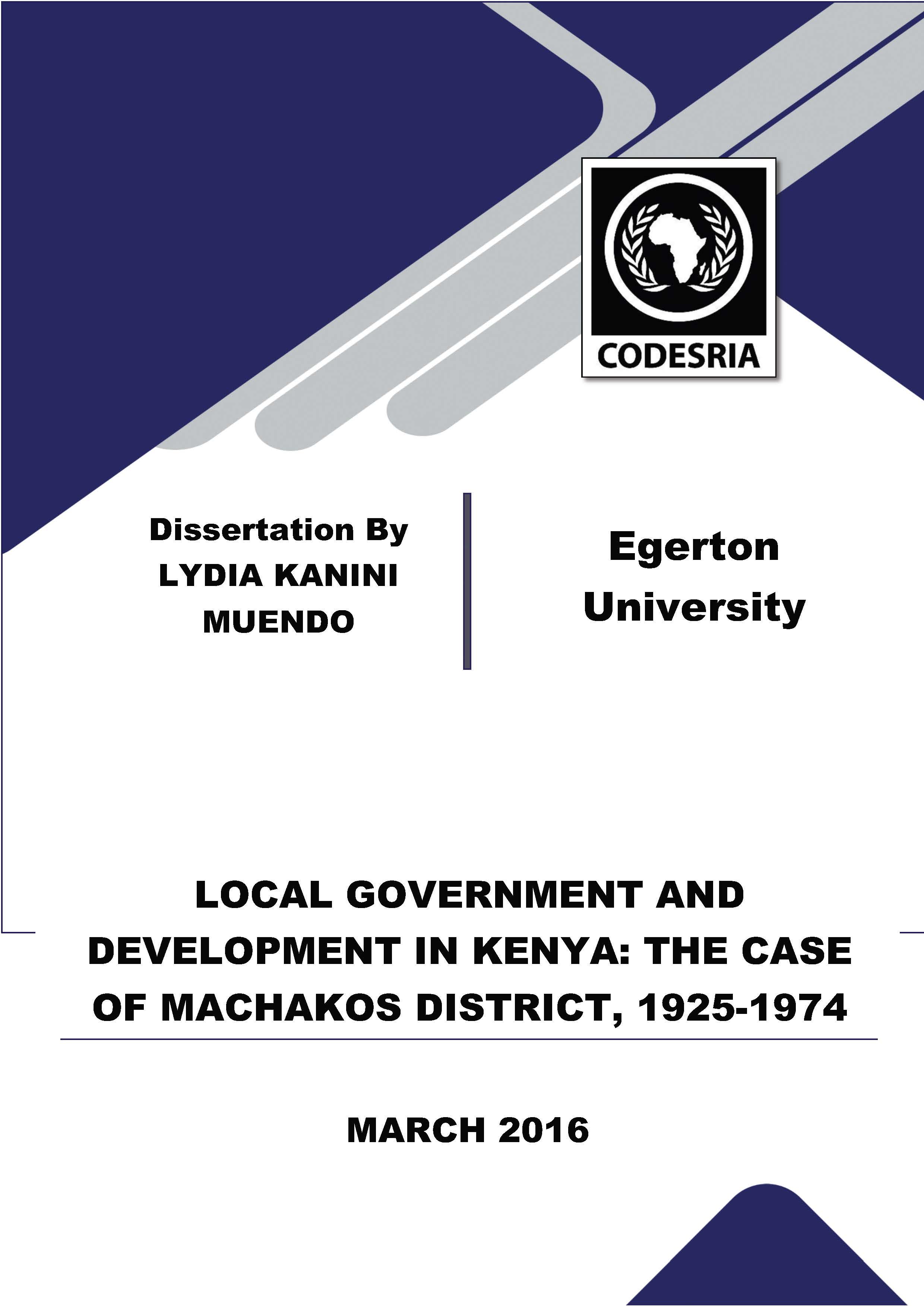LOCAL GOVERNMENT AND DEVELOPMENT IN KENYA: THE CASE OF MACHAKOS DISTRICT, 1925-1974
Mots-clés :
LOCAL GOVERNMENT, DEVELOPMENT, KENYA, MACHAKOS DISTRICTSynopsis
This study examined the history of local government and its role in development in Kenya using the case of Machakos District. This role began in the colonial period with the establishment of Local Native Councils (LNCs) in 1924. Though set up by the colonial government to reduce African political agitation for representation in the Legislative Council, these LNCs performed better as vehicles of improvement of the African areas. They operated under the chairmanship of the District Commissioner (DC) for the most part of the colonial period. In 1950 both their name and composition was changed to imply greater African
participation. It was also a time of increased central government control of local government activities. At independence, the local government was empowered to undertake many socioeconomic functions through the decentralised government system of regions which were soon abolished and replaced with a stringent control of local authorities. There were many
challenges faced by the local government since its inception in carrying out its functions. This study was therefore an evaluation of local government in Machakos District since inception showing the extent to which it was able to achieve the development of the area covered and the challenges faced. Postcolonialism, a theory which aims to understand the
dynamics of colonialism on the colonised and the colonising power from the beginning of imperialism to the present, guided the study. The local government system and the functions thereof were as a direct result of colonial contact. Archival records were used as a primary source of data complemented by local government records in the DC’s office as well as those in the County Council of Masaku’s offices. Oral interviews were conducted to corroborate these archival sources. Secondary data was sought from both published and unpublished works on local government in Kenya and beyond. The study adopted a historical research design. Therefore, an interpretation of meanings and an assessment of the significance of events were carried out. Descriptive data analysis and interpretation then followed in line with the objectives which comprised the tentative chapters. The study is a contribution to the historiography of local government in Kenya. Further studies can be undertaken to
understand the role local government has played over time in development of other parts of the country as well as the concept of devolved governance.
Téléchargements
Références
Cambridge University, ‘Summer Conference on Local government in Africa’, (Cambridge:Cambridge University Press, 1961).
Lury, D.A. and A.A. Shah, ‘Local Government in Kenya: Income and Expenditure, 1959-1961’, East African Economic Review, Vol. 2, No. 1, 1966.
Maina, B., ‘Monitoring and Evaluation of Support to Decentralisation and Local Governance:Kenya Case Study’, European Centre for Development Management, Discussion Paper No. 61 Dec 2004.
Menon, B., et al, ‘Decentralisation and Local Government in Kenya’, International Studies Program, Working Paper 08-32, December 2008.
Mwenda, A.K. (ed), ‘Devolution in Kenya: Prospects, Challenges and the Future’, Institute of Economic Affairs, Research Paper No. 24, 2010.
Nottingham, J., ‘The Development of Local Government in Kenya’, (Unpublished Manuscript, 1954).






